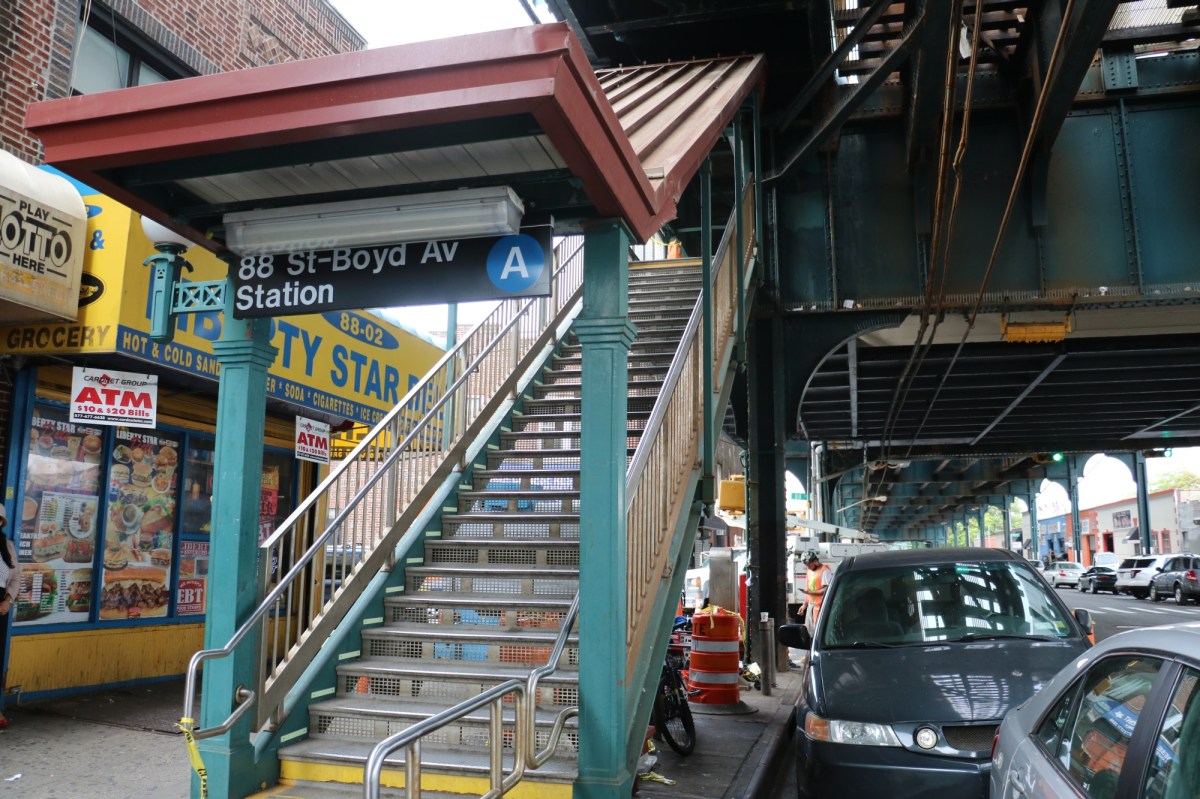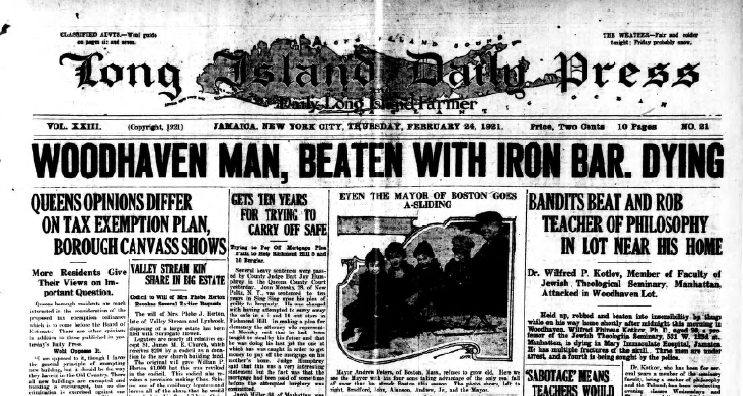On a frigid night in February 1921, Professor Wilfred Phineas Kotkov had just departed the A Train at the Boyd Avenue (88th Street) Station on Liberty Avenue in what was then considered Woodhaven.
The 36-year-old professor of philosophy at the Jewish Theological Seminary in Manhattan was accustomed to coming home late and often cut across the empty lot at the corner of Benedict (87th Street) and Liberty to get to his home where he lived with his wife, Anna, and two children.
It was in that dark vacant lot, just after the clock struck midnight, that four young men lay in wait with robbery and mayhem in their minds.
Cries for help were heard by Patrolman George Burling, of the precinct in Richmond Hill, on patrol several blocks away. When Burling arrived at the scene, he found Kotkov lying face down in the snow, a bloody iron bedpost at his side. Four young men were seen fleeing the scene; Burling pursued the young men and managed to quickly apprehend two of them.
Peter Nunziata and Joseph Alfano of Brooklyn were immediately arrested and, once at the precinct, they confessed and implicated Frank Cassesso, also from Brooklyn, and Alphonso “The Turk” Verona, of Water Street, Woodhaven in the attack.
According to their confessions, it was Verona who had suggested that they prepare for a “stick up.” An abandoned iron bed frame was found in the vacant lot and the heavy post, with a brass knob, was pried off. The quartet stood near the Boyd Ave. station, the iron post hidden under Nunziata’s long coat, waiting for someone who appeared prosperous enough to rob.
After the beating, they turned out Professor Kotkov’s pockets, looking for money, but very little was to be found. Instead, the quartet had to settle for Kotkov’s horn-rimmed glasses, his fountain pen and gold watch. Kotkov was taken to Mary Immaculate Hospital in Jamaica where he died three days later.
There were immediate calls for swift justice, owing to the fact that Kotkov had made no resistance, nor was he even given the opportunity. Newspaper editorials called for the ultimate retribution – the electric chair.
The wheels of justice were indeed swift. Within a week, indictments were handed down and by the first week of April, just over five weeks after the attack, the trial of Peter Nunziata began. The 17-year-old, the youngest of the four attackers, was a cool customer in court, often seen yawning during testimony. At one time during the trial he was scolded by the judge for trying to light a cigarette in court.
Nunziata’s defense was a vigorous one (his lawyer was Edward J. Reilly, who would later go on to defend Bruno Richard Hauptmann). Reilly had Nunziata take the stand on his own behalf and declare that it was Verona of Woodhaven who was the mastermind, arranging the killing to settle a personal score.
Nunziata also claimed that his confession was beaten out of him by the police with a rubber hose and that he was just in the wrong place at the wrong time.
On April 18, the jury deliberated for less than two hours and came back with a verdict of guilty, and that included an hour for lunch. Nunziata sat unmoved when the verdict was read. The judge explained to the young man what the verdict meant; that he would soon face death in the electric chair.
A few days later the judge set the date of execution as June 5, about six weeks away. The attack, the investigation, the indictment, the trial, the deliberation and the sentencing all took place within a 105-day window. The public demanded swift justice, and they received it.
Peter Nunziata was the youngest person ever sentenced to death in New York and he received the sentence coolly, without flinching. He was escorted out of the courtroom to a car waiting to drive him to death row in Sing Sing, where “Old Sparky” was waiting.
Next month, in the Old Timer, we will find out what happened to Peter Nunziata and the other defendants in the trial for the murder of Professor Wilfred Kotkov of Woodhaven.





































